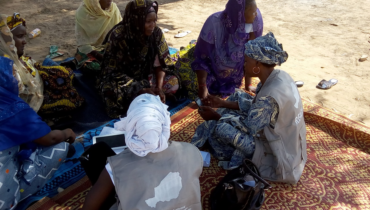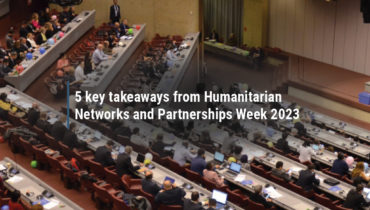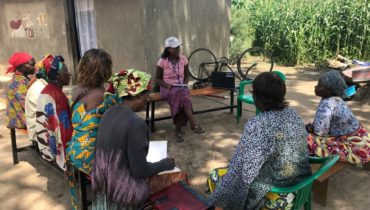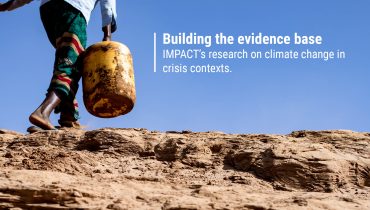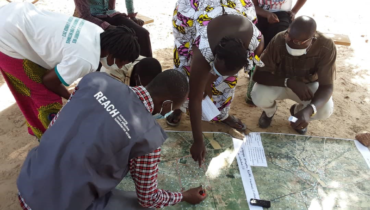Ensuring accountability to affected populations: Community perceptions of humanitarian aid in South Sudan
3 September 2019
Accountability to affected populations (AAP) represents an active commitment to use power responsibly by taking account of, giving account to, and being held accountable by the people humanitarian organisations seek to assist. Whilst humanitarian actors are strengthening their work, much more is needed to institutionalise this practice. With this backdrop, REACH is gaining a better understanding of South Sudanese perceptions of humanitarian assistance.
The conflict in South Sudan continues to drive humanitarian needs across the country. Earlier this year, the UN reported that 7.1 million people will require humanitarian assistance. Building on its existing data collection efforts, REACH has developed a number of indicators associated with AAP to address information gaps facing the humanitarian response in South Sudan. In line with a global commitment to strengthen accountability, the indicators measure the awareness of humanitarian service delivery from the perspective of beneficiaries. In so doing, the indicators monitor whether affected populations believe the assistance they receive is fair, relevant to their needs, and if it is offered with respect and dignity.

Left: Map from the factsheet shows different levels of access to humanitarian assistance in the country, highlighting difficulties in some areas. Right: Map shows the levels of dissatisfaction linked to the provision of aid in the assessed locations.
Equally important, understanding communities in South Sudan is key for effective humanitarian assistance. It allows for progress towards the way beneficiaries are relieved of their suffering. It also prevents untargeted assistance, irrelevant to actual needs, from being implemented. This is a teaching of the grand bargain that has been put to use wisely in the fast-evolving context that is South Sudan.
Results from a REACH assessment conducted in May, put forward some enlightening findings- many of which point to a need for better, more targeted response for affected populations in South Sudan.
In the six months prior to data collection, 59 percent of the population assessed reported having received humanitarian assistance. Out of these, a high proportion (73%) of assessed settlements reported not being satisfied with humanitarian assistance, with 30 percent of those claiming this is because insufficient aid is being delivered.
Moreover, only half of the assessed population reported believing assistance was targeted to those most in need. This perception from the beneficiaries’ point of view clearly indicates the need for more evidence-based response, which can lead to strategic prioritisation of needs for those most vulnerable.
On a much more positive note, nearly 90 percent of interviewees reported feeling respected by humanitarian actors. This feedback is important as ensuring respect and dignity to affected populations is just as important as the provision of effective assistance.
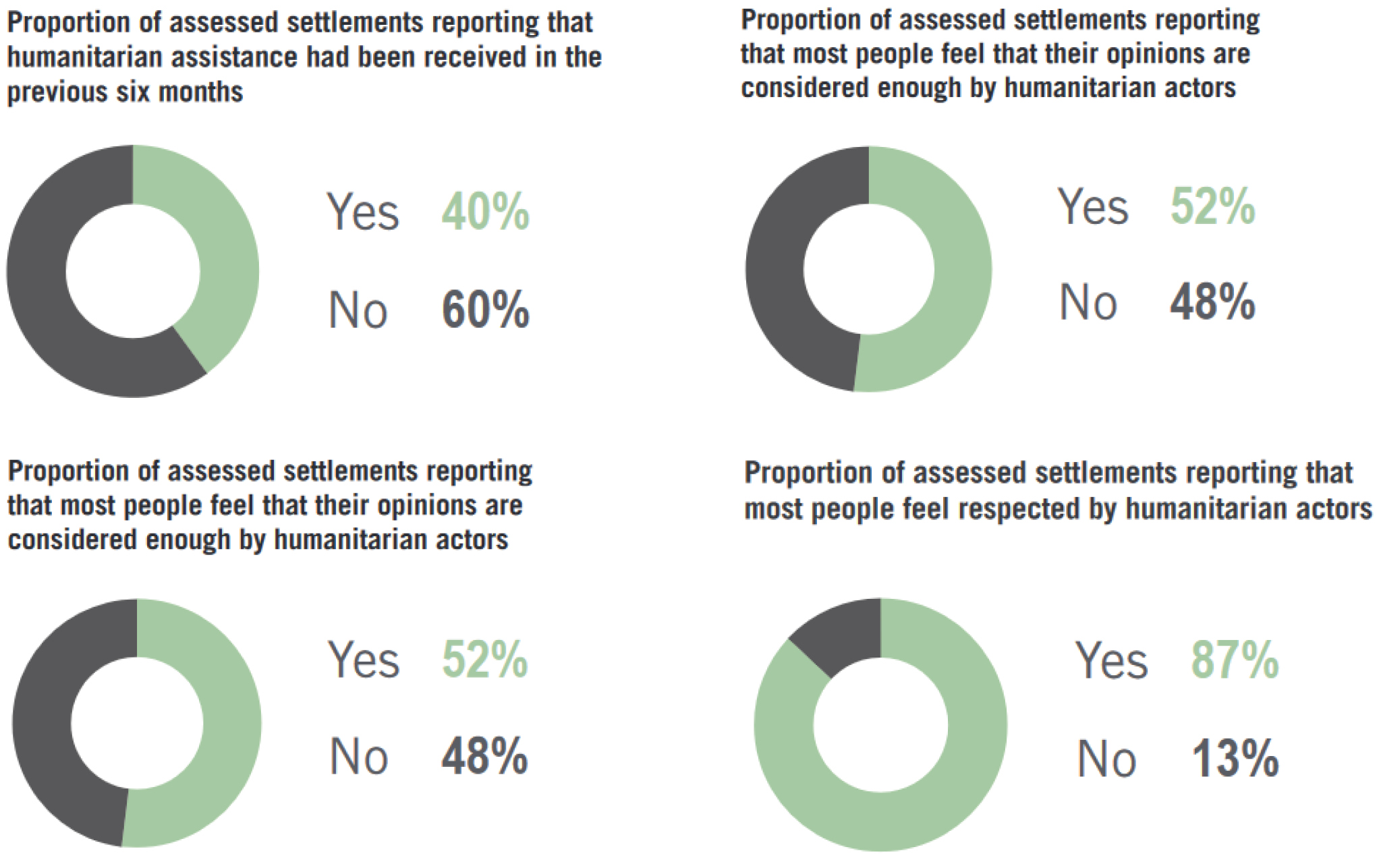
Figures extracted from the factsheet highlight the progress left to be made in order to comply with beneficiaries expectations of humanitarian assistance. Monitoring AAP consistently is a strong existing avenue for improvement.
Evident from these findings is the fact that further work is needed to ensure humanitarian assistance remains targeted and directly informed by affected populations themselves. Given the persistent high levels of humanitarian needs in South Sudan and the protracted nature of this crisis, a stronger understanding of perceptions of South Sudanese communities on humanitarian assistance – as well as their needs – will go a long way in maximizing the effectiveness of the humanitarian response across the country. In support of this goal, REACH will continue to gauge perceptions of affected populations, ensuring this information continues to inform humanitarian partner responses.
For a more detailed analysis, please read South Sudan – Accountability to Affected Population factsheet.






